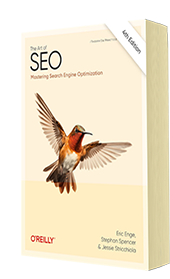In Search of SEM’s Future
Search engine marketing (SEM) has been the hottest thing for Web merchants since sliced bread. But the technology is changing quickly, and widespread adaptation of SEM could bring almost as many challenges as opportunities. Stephan Spencer, founder/president of Madison, WI-based Web development and marketing agency Netconcepts, weighs in with eTailer about where search is headed.
Q: Click fraud seems to be a hot topic among e-tailers. How big of a concern is it today?
A: Click fraudsters will employ automated means to click on your ads from spoofed, geographically distributed IP addresses over random periods of time. Or they may simply outsource the clicking to a legion of poor people in India or elsewhere. It’s a real and serious threat to the entire pay-per-click industry.
For one thing, the PPC system is ripe for global attack by a worm that clicks on ads indiscriminately. That would be a nightmare to untangle. But I would be more worried about the increasing number of MFA (made-for-AdSense) sites whose owners are turning to ever increasingly sophisticated and unscrupulous ways of boosting their AdSense revenue by driving more clicks on the ads displayed on their sites.
Q: What are some of the other search hot-button issues?
A: I think search engine optimization is going to undergo a huge transformation over the next several years. No longer will you be able to track your position for particular keywords and know for certain that those rankings are what your consumers out there in the world are seeing, because personalization, intention, geographical location, etc. will all be taken into account to deliver a unique set of search results to each individual person.
So, you may be able to say that you are number one in Google for “women’s clothing” but that may only be for Betty Smith in Iowa, on a particular date and time and only because she is in a buying mood. SEO is going to be a very different ball game, as you can imagine.
A much better way to look at SEO is to find ways to mine the “long tail,” the distribution of sales or traffic by keyword, or by product, etc. So your most popular keywords will give you a large chunk of your traffic and sales, but all the lesser keywords that perhaps deliver just a handful of visitors per month could in aggregate add up to a half of your business.
SEO should be about mining the long tail — adding more length to the tail and more area underneath the curve. For example, adding more area underneath the curve could involve some automated means of adding popular keyword synonyms to title tags across the entire product catalog. A pair of slacks could have the keyword “pants” added automatically to its product page, which added more area under the curve.
You could elongate the tail by increasing the number of your pages that are indexed by the search engines. For example, you could take your Endeca “Guided Navigation” pages and make them accessible to the search engine spiders. Each permutation would be a separate page, and together they could add potentially tens of thousands or hundreds of thousands of pages to your “virtual sales force” of pages indexed.
Q: Is paid search continuing to grow?
A: I am a strong proponent of paid search as something to fi ll in the gaps and to augment your natural search initiatives. I don’t see that going away any time soon. What I think is unfortunate is that many e-tailers focus too much on paid search and not enough on natural search.
Eyetracking studies done by San Francisco-based software firm Eyetools have shown that searchers really don’t look over on the right-hand side to paid results. Being number 1 in the paid results on the right gives you a similar level of visibility to being number 4 to number 7 in the natural results.
Focus your efforts primarily on getting to where the eyeballs are, over on the top left. Not only do you get the boost in visibility on the left side, you also get an implied endorsement effect. People see you at the top of the natural results in Google and they think subconsciously that you must be good, because Google thinks so.
Q: What are you hearing about the recent efforts to standardize the search feeds?
A: My hat’s off to Alan Rimm-Kaufman [president of The Rimm-Kaufman Group] for putting the initiative together of bringing to the table the comparison shopping search engines, some major e-tailers, and some of the big agencies to hash out a standard because it is so desperately needed. Having to supply different formats to each one of the comparison engines is a logistical nightmare. With this initiative that nightmare could go away.
Q: If you could give one piece of advice to a Web marketer, what would it be?
A: This might sound crazy, but start blogging. One client started blogging and podcasting and has found that more than 13% of online sales can be attributed to his blog. Search engines love blogs. If you do it right, you can get visibility for your targeted keywords in ways you never thought possible. You have to be careful when blogging ,though. You need to do it with sincerity and transparency. Don’t just hire a ghost writer and let them loose. A good blog has a personality, shares insightful commentary, cites its sources, and follows the other various unwritten rules of the blogosphere.

Chapter 6:
Keyword Research
From the fundamentals of link building to the nuances of natural linking patterns, virality, and authority.
Related Posts

Embrace Journaling, Tackle Tardiness, and Explore Our Energetic Echo
Here’s what I found inspirational, challenging, or just downright hilarious this week. What caught your eye? And, remember to check out this week’s great podcast episodes: Scaling a SaaS Company with Jason Morehouse “A crucial factor to business success is to find and take the personal path that works best for you.” — Jason Morehouse […]
Read More
Harrison’s harmony, conquering a blank canvas, & gut health hacks
Here’s what I found inspirational, challenging, or just downright hilarious this week. What caught your eye? And, remember to check out this week’s great podcast episodes: Be a Sales Game Changer with Fred Diamond “True elite sales professionals develop a dedicated mindset, proactive client interaction, and continuous self-preparation. They understand their client’s needs and enable […]
Read More
Rebirth of sleeper trains, 4,000 weeks is a long/short time, and golden age for medicine
Here’s what I found inspirational, challenging, or just downright hilarious this week. What caught your eye? And, remember to check out this week’s great podcast episodes: A Story Worth Retelling with Luke Storey “Aligned values are the cornerstone of successful partnerships, whether in business or life, as they shape our moral code, define our priorities, […]
Read More
